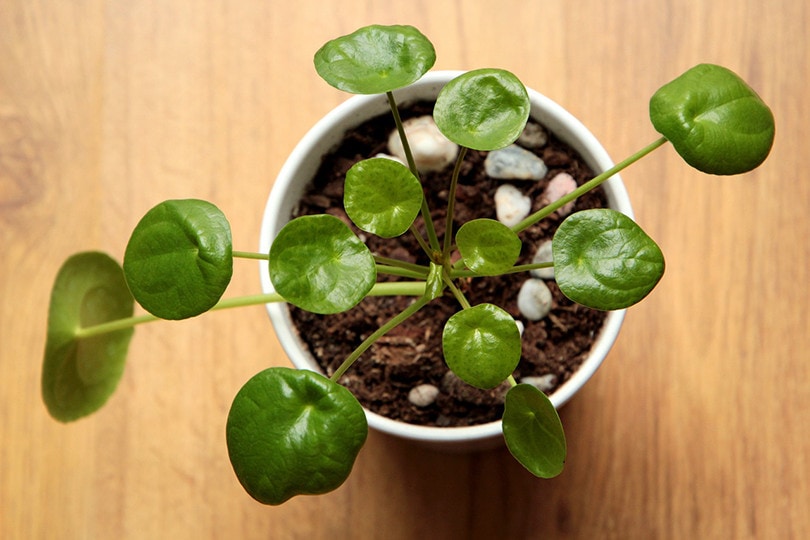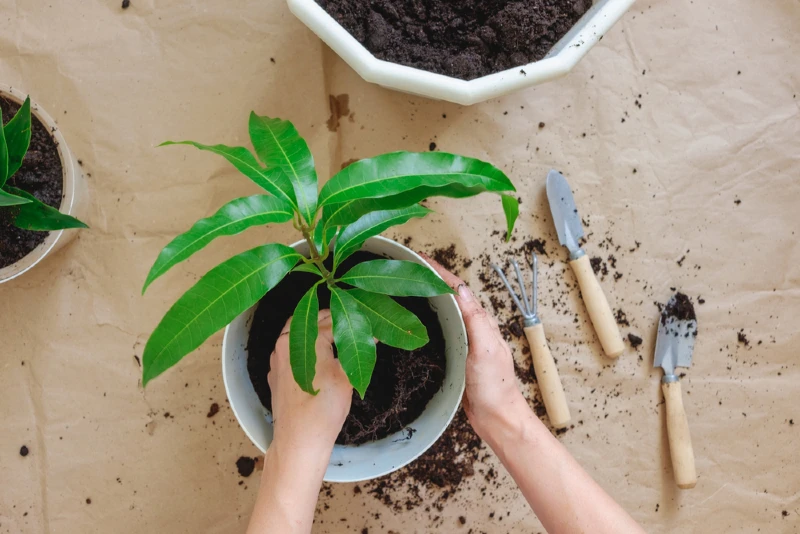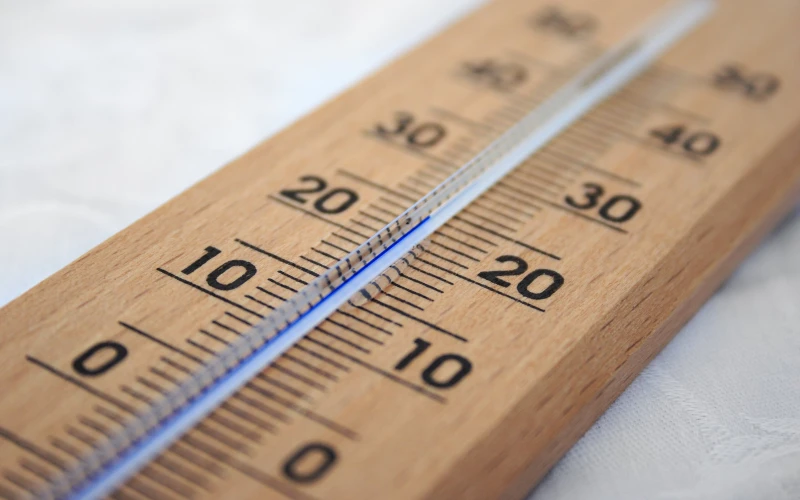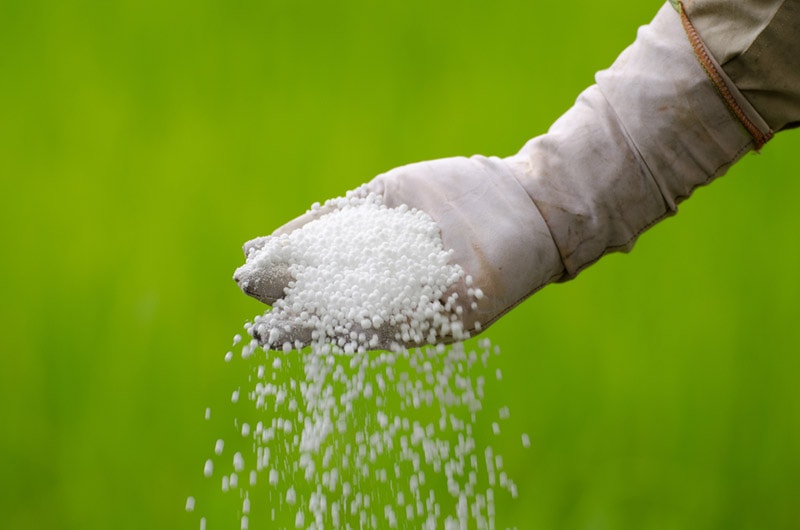How Much & How Often to Water Pilea: Key Characteristics & FAQ
-
Pete Ortiz
- Last updated:

Are you in the market for an exotic evergreen plant to grow indoors? Well, then Pilea, more commonly known as the Chinese money plant, might be exactly what you’re looking for. Believed by many to bring luck and fortune (yes, hence the name), it’s not at all a “heavy drinker”. To cultivate steady growth, only water it once in 7–14 days. Should you deep-water, or just sprinkle?
What is the right soil/fertilizer mix for this plant? Can it survive in the shade, or not? How does the temperature affect its watering needs? What about the humidity levels? And finally, how long can you expect the missionary plant (another catchy nickname) to last? Join us, and let’s find the answers together!
| Botanical Name | Pilea peperomioides |
| Soil Type | Well-drained, moist, moderately rich |
| Soil PH | 5.0–6.5 (low acidity) |
| Sun Exposure | Partial shade; bright light |
| Watering Requirements | Low, once in 1–2 weeks |
| Temperature | 60–85° Fahrenheit |
| Humidity Levels | 50–75% (above average) |
| Hardiness Zone | 9b–11b USDA |
| Blooming Time | Winter/spring |
The Pilea Plant: Key Characteristics
A symbol of prosperity, this plant is a brilliant gift idea for friends and loved ones. It comes in different sizes, textures, and even colors, but the fleshy, glossy leaves and bright stems (with rare tiny flowers) always make it stand out. The most popular variety is the one with the coin-shaped leaves, of course. Low-maintenance, the pilea purifies the air and isn’t particularly big; it only reaches 10–12 inches in height.
More importantly, it’s very easy to propagate. All you’ll have to do is pick a stem (not the main trunk!), cut it carefully, and plant it in a glass of water. Refresh the water every 7 days and only move the cutting to a pot once it grows roots (1–2-inches long). This is interesting: the missionary plant is native to China and was first introduced to Western civilization in 1946 by Agnar Espegren, a Norwegian missionary.

How Much Water Does Pilea Need?
The #1 mistake that most indoor gardeners do is adding too much water. While no plant can survive without it, overwatering is one of the biggest hazards even for the toughest plants out there. When the soil is overly moisturized, that stimulates fungi growth. First, the fungus attacks the roots. And, since we can’t see what’s going on down there, the disease quickly spreads over to the healthy stems and leaves.
So, what can you do to avoid this? For starters, the pilea has low water requirements. During the active season, you should water it once a week; however, when it’s dormant or growing at a very slow pace, only water it every 1–2 weeks, or less often. Follow this simple rule and you shouldn’t have any trouble with waterlogging. With that said, underwatering can also be a problem and make the plant saggy.
Learning How to Do It Right
Every money plant is different and it’s affected by temperature, humidity levels, the soil, and other factors. That’s why it’s recommended to check the soil with your fingers before watering it. Go at least 2–3 inches deep to get an accurate “reading” on moisture levels in the soil. Do your best to reach 70–75% of the container’s height. Even when the top is dry, the soil at the bottom might still be wet.
We need it to be dry. If it’s not, postpone the watering session for a day or two. The goal here is to give the soil time to dry before each watering session and water it deeply. Next, pay extra attention to the drainage holes. There should be water running through those holes. If there isn’t any liquid underneath the container that means it’s time to move the Pilea plant to a different pot (we’ll talk about that in more detail in a moment).

How Much Sun Does This Plant Require?
The pilea doesn’t survive full exposure to sunlight. This is the most important thing to keep in mind. The sun will literally scorch the leaves if you leave them unprotected for a long time. Partial shade is the way to go here. Now, if you get the missionary plant used to sunlight gradually, it might be able to tolerate it. This is especially true for species that are originally from the hottest regions in China.
Still, there’s little point in putting the plant at risk of being burned out. But what about the light, though? To cultivate steady growth, make sure the plant gets lots of bright (indirect) light. Without it, Pilea will wither and fade. The best thing to do here is to put the pot right next to a window and keep that window closed. The glass will protect the plant yet provide it with just enough light to thrive.
Temperature and Humidity Levels for the Pilea Plant
The Pilea is hardy to zones 9a–11b and isn’t at all resistant to frost. The ideal temperature for it is 65–85 degrees F. It can thrive in temps as low as 50–60 degrees but anything colder than that will prevent it from growing and might even damage it. So, if you live somewhere in the North, make sure the windows and doors in the room are tightly shut. Long exposure to cold air will lead to undesired consequences.
And how does humidity affect this plant? Should you even worry about it? Yes, the pilea prefers above-average levels (50–75%). When there’s not enough humidity in the air, the side effects will be very similar to poor exposure to light. If you live in a dry area, do consider investing in a humidifier. Place it in the same room as the plant, and that should do the trick. Misting will help as well.

Can You Grow It in Regular Garden Soil?
Do you only have access to cheap, everyday soil from a local store? Go for it. However, it won’t be a perfect choice for the pilea plant. The right soil for this plant is a well-drained potting mix, rich in organics. Peat moss and perlite: that’s the best combination. Or, if you have some cacti potting mix collecting dust in the garage, use it instead. While the Pilea isn’t a succulent, it does have a lot in common with them.
Should You Fertilize the Pilea?
No need to go crazy with fertilizing. Get your hands on a standard bag of all-purpose fertilizer (20–20–20) and add it into the soil once a month or so during the growing period—that’s it. Liquid fertilizer is best for the missionary plant. A quick note: if you just bought the plant in a pot full of soil or are planning on repotting it, skip the fertilizing part, as it will do more harm than good. Only consider adding it in the second year.

No Proper Watering Without the Right Pot
Just like any other tree or plant, over time, the UFO plant outgrows its pot. The key here is to keep your eyes on the roots. Are they trying to escape through the drainage holes or the top of the container? If the answer is yes, then it’s time to move it to another plant. So, how long does it take for this plant to strive for a larger container with bigger drainage holes? On average, repotting will be due every 2–3 years.
This depends on how fast the plant grows, of course, and the climatic conditions. Now, the pilea plant is rather tough and handles transplantation even during the slow season. Still, we’d recommend doing this in late winter/early spring. Also, put a layer of gravel or limestone at the bottom of the new pot and water the plant generously. As for the pot, terracotta and ceramic have proven to be reliable and efficient.

Can You Eat the Pilea Plant? How Long Does It Last?
The short answer is no, the pilea is not edible. Technically, you can, of course, consume it, but you won’t like the taste of it. With that said, this isn’t a toxic plant. That’s true for both humans and pets. If your cat or dog decides to feast on it, that won’t lead to any poisoning. The worst thing that can happen after your four-legged friend eats it is an upset stomach.
As for the lifespan, on average, this plant goes on for around a decade. The good news is that if you take proper care of it (water adequately, keep the soil fertilized, and repot it when the time comes), it’s very much possible to make the missionary plant last for an extra 3–4 years. Does that mean you’ll have to buy new seeds every 10–12 years? Not quite: propagation will keep the plant’s “babies” alive for a very long time.
Conclusion
The pilea has been around for quite some time now and is as popular as ever. First, it’s not hard to grow, especially if you follow our guide every step of the way. Protect the plant from direct sunlight, water it moderately, and don’t add more fertilizer than it needs. The UFO plant is very easy to prune and cultivate, by the way, and helps keep the air clear.
Who knows—maybe it will bring you wealth, prosperity, and good luck after all? While it doesn’t last for decades, Pilea peperomioides is still a great pick as your next houseplant. Trim it regularly, remember to repot it when the time comes, and the pilea plant will flourish!
- Net – Pilea peperomioides
- How Long Do Chinese Money Plants Live?
- When and How to Replant a Pilea Plant
- MasterClass – How to Grow a Money Plant
- How to Prevent and Treat Root Rot
- Wikipedia – Pilea peperomioides
- 10 Houseplants That Are Safe for Cats and Dogs
- Pilea peperomioides care: The best light, water, and food
- Does Plant Misting Work? Here’s What Plant Pros Say
- Com – All You Need To Know About Pilea
- How to Grow Chinese Money Plant (Pilea Peperomioides)
Featured Image Credit: a_low, Pixabay
Contents


